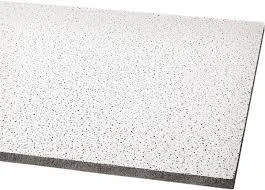Dec . 04, 2024 05:05 Back to list
Exploring Various Ceiling Materials with Fiber Options for Enhanced Design and Functionality
Understanding Fiber Ceiling Materials Benefits, Types, and Applications
Fiber ceiling materials have gained significant popularity in recent years, both in residential and commercial spaces. Their versatile characteristics, aesthetic appeal, and functional benefits make them a favored choice for architects, designers, and homeowners alike. This article will explore the advantages, types, and applications of fiber ceiling materials to help you understand why they are a great option for your next construction or renovation project.
What Are Fiber Ceiling Materials?
Fiber ceiling materials are modern building materials typically composed of various fibers (like mineral, glass, or synthetic fibers) combined with binders and other additives to create durable, lightweight ceiling panels. These materials come in a variety of styles, textures, and finishes, making them adaptable for different design preferences and functional requirements.
Benefits of Fiber Ceiling Materials
1. Acoustic Performance One of the most significant benefits of fiber ceiling materials is their ability to absorb sound. The porous structure of the fibers allows these ceilings to reduce noise levels, making them ideal for spaces where sound control is essential, such as auditoriums, offices, and classrooms. Acoustic ceiling panels can help create a more pleasant environment by minimizing echoes and reducing background noise.
2. Fire Resistance Many fiber ceiling materials are designed to be fire-resistant, making them a safer option for commercial and residential buildings. This characteristic adheres to building codes and safety regulations, providing peace of mind for property owners and occupants.
3. Moisture and Mold Resistance Fiber ceiling materials often possess inherent moisture resistance. This quality is crucial for areas prone to high humidity, like bathrooms and kitchens, as it helps prevent mold and mildew growth. Ensuring a clean and safe indoor environment is essential for maintaining the health and wellness of inhabitants.
4. Ease of Installation and Maintenance Fiber ceilings are lightweight and often come in interlocking tile formats, which simplifies the installation process. They can be easily replaced or repaired if damaged. Regular cleaning is straightforward, usually requiring just a gentle wipe with a damp cloth.
5. Aesthetic Versatility Fiber ceiling materials are available in various colors, patterns, and textures, allowing for creative design choices. From sleek, modern looks to more traditional styles, these ceilings can complement any architecture or interior theme.
fiber ceiling materials

Types of Fiber Ceiling Materials
1. Mineral Fiber Panels These panels are made from natural or synthetic mineral fibers. They are popular for their excellent acoustic properties and fire resistance. Mineral fiber panels are commonly used in commercial spaces due to their durability and performance.
2. Glass Fiber Panels Known for their strength and moisture resistance, glass fiber panels are ideal for environments that require high durability and finish. They are often used in industrial settings, healthcare facilities, and clean rooms.
3. Synthetic Fiber Panels Made from various synthetic materials, these panels are lightweight and available in numerous finishes. They tend to be more cost-effective and provide ample design flexibility.
Applications of Fiber Ceiling Materials
Fiber ceiling materials can be utilized in a wide array of settings
- Commercial Spaces Office buildings, shopping centers, and schools benefit from their acoustic control, aesthetics, and fire safety features. - Residential Interiors Homeowners can enhance their living spaces with fiber ceilings, particularly in areas like basements and family rooms. - Healthcare Facilities Hospitals and clinics prioritize cleanliness and sound management, making fiber ceilings a practical choice. - Educational Institutions Classrooms and lecture halls can achieve better acoustics and a comfortable learning environment with the right fiber ceiling materials.
Conclusion
In summary, fiber ceiling materials offer an impressive combination of aesthetic versatility, functional benefits, and practical applications. With options like mineral fiber, glass fiber, and synthetic fiber panels, there is a solution tailored to meet the specific needs of any project. Investing in fiber ceiling materials can significantly enhance the indoor environment, ensuring comfort, safety, and style for years to come. Whether you are designing a new building or renovating an existing one, consider the numerous advantages fiber ceilings can bring to your space.
-
Durable Ceiling T Grid Systems | Easy InstallationNewsAug.29,2025
-
PVC Gypsum Ceiling: Durable, Laminated Tiles for Modern SpacesNewsAug.28,2025
-
Pvc Gypsum Ceiling Is DurableNewsAug.21,2025
-
Mineral Fiber Board Is DurableNewsAug.21,2025
-
Ceiling Tile Clip Reusable DesignNewsAug.21,2025
-
Ceiling T Grid Modular DesignNewsAug.21,2025







